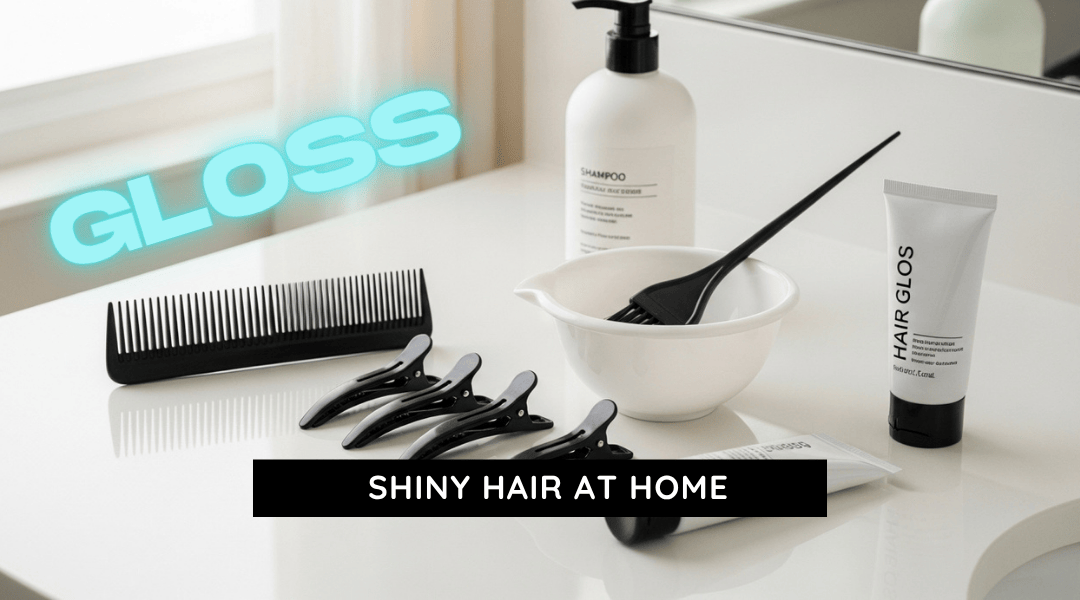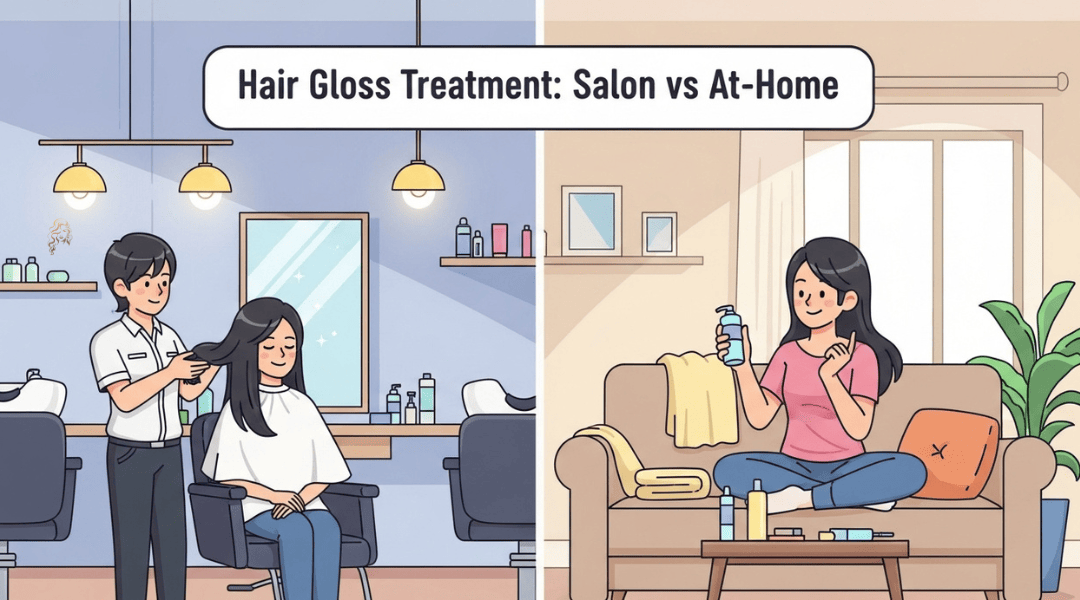Does Cutting Hair Make It Grow Faster? The Truth Behind the Myth
- Written by: Riley Lane
- Reviewed by: Riley Lane
- Updated: October 3, 2025
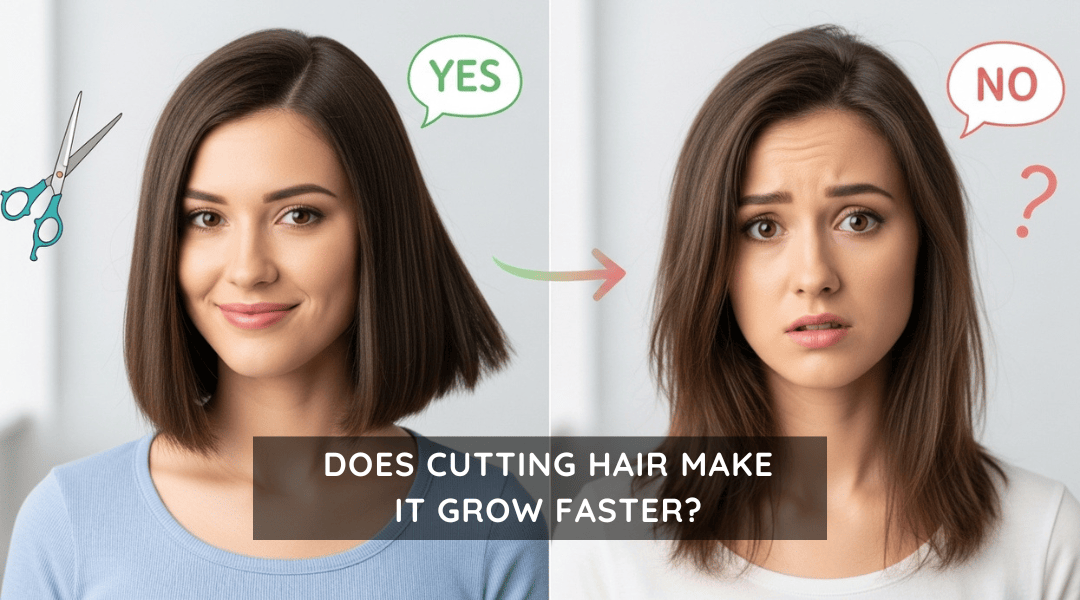
You’ve probably heard it before: “If you want your hair to grow faster, just get a trim every six weeks.” Maybe it came from your stylist, your grandmother, or a well-meaning friend. But is there any truth to this age-old advice, or is it just another beauty myth that refuses to die?
At Salon 1150 in Austin, we get this question all the time. And as much as we love a good haircut, the science tells a slightly different story. Let’s break it down.
Quick Answer: Trims Don’t Speed Up Growth, They Protect It
Here’s the bottom line: cutting your hair doesn’t actually change how fast it grows. Hair growth happens at the root beneath the scalp, not at the ends. On average, most people grow about half an inch per month, whether they trim religiously or not (American Academy of Dermatology).
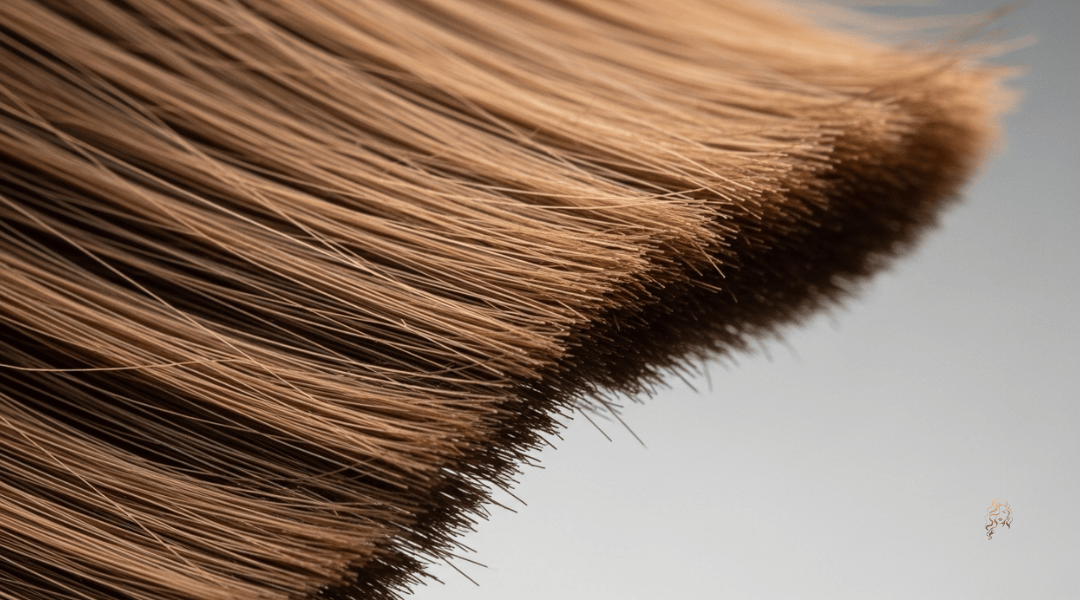
So why does it feel like trims speed things up? Because trims stop split ends from breaking higher up the shaft. When you prevent that breakage, you keep more of the length you’ve already grown. In other words, it’s not about faster growth, it’s about smarter length retention.
Why People Still Believe the Myth
If the science is clear, why does this myth hang around like a bad haircut? A few reasons:
The Blunt-End Illusion
Ever notice how your hair looks thicker and fuller right after a cut? That’s because blunt ends reflect light evenly, making strands look denser even if the follicle output hasn’t changed.
Retention Creates the Illusion of Growth
Trim off weak, frayed ends, and suddenly your hair looks longer and healthier within weeks. That visual trick makes people swear by trims as a growth hack.
Cultural Beliefs
In many cultures, shaving a baby’s head is said to make hair grow back thicker or stronger. Sweet tradition? Absolutely. Scientifically proven? Not so much. Hair characteristics are locked in at the follicle, not determined by whether scissors touch the ends.
How Hair Actually Grows (and Why Ends Don’t Matter)
Here’s a peek under the hood:
- Anagen phase (2–7 years): Active growth
- Catagen phase (2–3 weeks): Transition
- Telogen phase (3–4 months): Resting and shedding
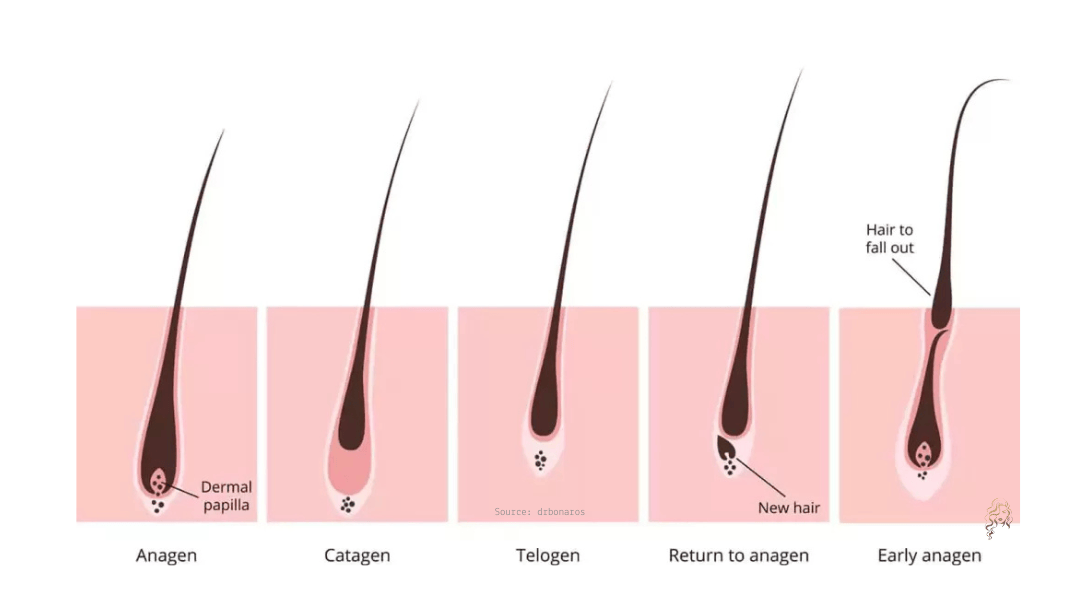
At any given moment, about 85–90% of your hair is in the anagen phase. Cutting the ends has zero effect on what’s happening inside your follicles. That’s why dermatologists, trichologists, and decades of studies (including one from 1928 on shaving and another from 1970 on leg hair growth) all agree: trimming doesn’t trigger faster growth.
How Often Should You Trim? (The Smart Way)
So if trims don’t speed growth, how do you know when to book your next one? The answer depends on your goals, lifestyle, and hair type.
By Goal
- Maintaining a sharp cut: every 6–8 weeks
- Growing length: every 8–12+ weeks with micro-trims to prevent setbacks
By Hair Type
- Fine hair: every 6–8 weeks (prone to breakage)
- Curly or coily: every 8–12 weeks (watch for split ends, not just frizz)
- Chemically treated or heat-styled: every 6–8 weeks (color and hot tools take their toll)
- Relaxed hair: every 12–16 weeks, not necessarily with every touch-up
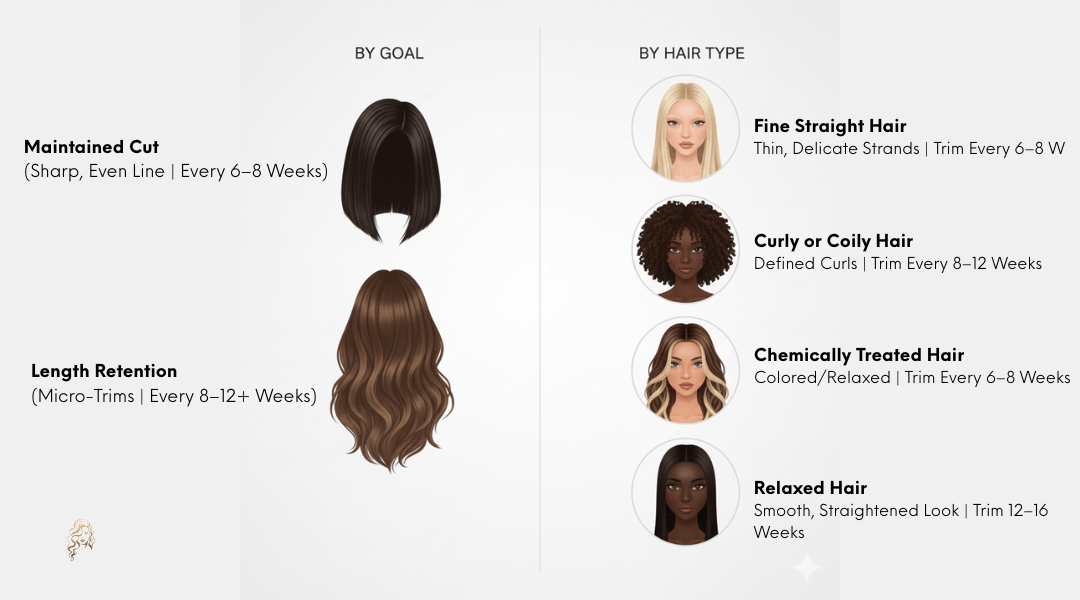
Think of it like car maintenance. You don’t change your oil daily, but skipping it altogether will cost you more in the long run.
Special Cases You Shouldn’t Ignore
Chemically Treated Hair
Bleach, color, relaxers, and perms weaken the structure of your hair. Regular trims keep fragile ends from snapping before you reach your dream length.
Protective Styles
Braids, twists, and weaves can protect hair and help retain length, but too-tight styles can cause traction alopecia (hair loss from pulling). Gentle tension is key.
Over-Trimming Backfires
Here’s a math check: if your hair grows half an inch a month and your stylist trims a full inch every six weeks, you’ll never see progress. The trick is balance.
Kids’ Hair Myths: Baby’s First Cut
One of the most common questions parents ask: “If I shave my baby’s head, will their hair grow back thicker?”
Science says no. Shaving doesn’t change follicle size or growth rate, it just makes regrowth feel coarser because the ends are blunt. Your toddler’s future hair thickness is written in their DNA, not in your choice of clippers.
What Actually Promotes Healthier, Longer Hair
So if trims don’t speed growth, what does help? A few things backed by science and stylist experience:
- Nutrition and lifestyle: A balanced diet, hydration, and stress management support overall follicle health
- Scalp care: Healthy scalps grow healthier hair. Think gentle exfoliation and proper cleansing
- Damage control: Heat protectants, silk pillowcases, and limiting chemical stress all extend your hair’s lifespan
- Professional guidance: A stylist who understands your hair type can create a personalized trim schedule that supports your long-term goals
As for supplements like biotin, they only help if you’re deficient (which is rare). Don’t expect miracles in a bottle.
FAQs (Real Questions From Real People)
Does trimming make my hair grow faster?
Quick Answer: No, trims don’t speed up growth. They prevent split ends and breakage, so you keep more of what you grow.
Expanded Explanation: Hair grows from the follicles in your scalp, not from the ends. Trimming removes damaged tips before they split further up the hair shaft, which helps you retain length and keeps your style looking fresh. Many people feel like their hair grows faster after a trim, but it’s really just healthier hair holding onto its length. The myth persists because trimmed hair looks thicker and more polished, but the actual growth rate is unchanged.
Expert/Scientific Insight: Dermatologists and trichologists agree: average hair growth is about 0.5 inches per month, regardless of how often you trim. Genetics, nutrition, and scalp health play a much bigger role in growth rate than cutting does.
Can I grow long hair without cutting it?
Quick Answer: Technically, yes—but you’ll risk split ends traveling up and forcing a bigger chop later.
Expanded Explanation: Skipping trims might let you avoid the salon for a while, but it can lead to uneven, frayed lengths and more breakage. Split ends can travel up the hair shaft, causing more damage and making your hair look less healthy. In the long run, you may need to cut off more length to restore a polished look. That’s why most stylists recommend regular micro-trims to keep hair strong and even as it grows.
Expert/Scientific Insight: Stylists and hair scientists often recommend dusting or micro-trims every few months to maintain hair health and maximize length retention.
How often should I trim relaxed or colored hair?
Quick Answer: Every 6–8 weeks for colored hair; 12–16 weeks for relaxed hair.
Expanded Explanation: Color and chemical processes can weaken hair, making it more prone to dryness and breakage. More frequent trims help protect colored hair, while relaxed hair—being chemically straightened—can go a bit longer between trims, but still needs regular maintenance to prevent split ends. Following a consistent trim schedule helps keep your hair looking vibrant and healthy, no matter your style.
Expert/Scientific Insight: Many salons and industry experts recommend these intervals as best practice for maintaining the health of chemically treated hair.
Does shaving make hair thicker?
Quick Answer: Nope. The blunt edge just makes regrowth look or feel thicker.
Expanded Explanation: Shaving cuts hair at the surface, creating a blunt tip that can feel coarser as it grows out. But the follicle’s size and density don’t change, so your hair isn’t actually thicker or denser. The illusion comes from the texture of the regrowth, not any real change in your hair’s biology.
Expert/Scientific Insight: Studies dating back to the 1920s confirm that shaving doesn’t alter the thickness, color, or growth rate of hair follicles.
Final Takeaway
Cutting your hair won’t magically speed up your growth cycle. But it will keep your ends healthy, your style polished, and your length goals on track.
At Salon 1150, we don’t believe in one-size-fits-all schedules. We believe in personalized plans that balance science with your unique style and lifestyle.
So here’s the real question: when was the last time your trim worked with your growth goals, not against them? Maybe it’s time we talk.




